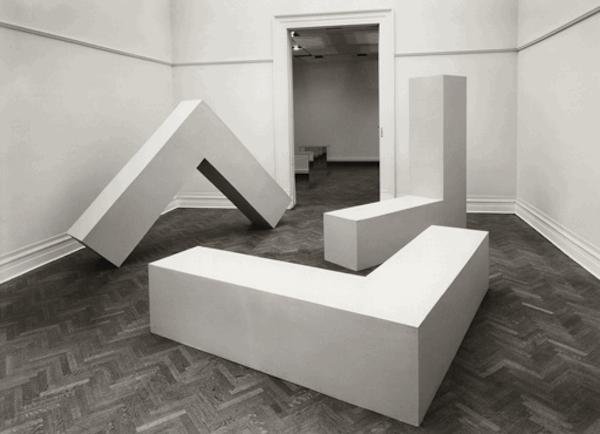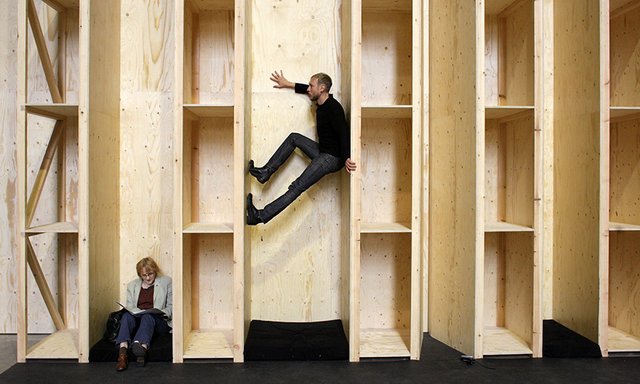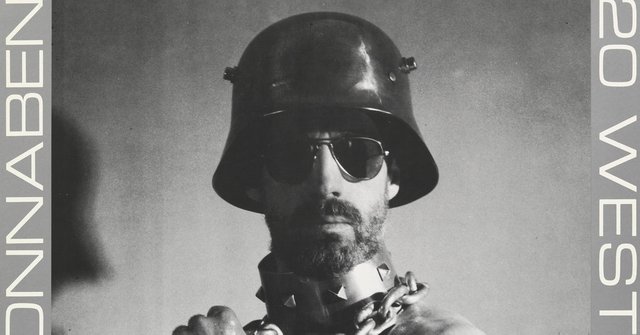Artistic space #166 - Morris Robert, amazing sculptures
Morris Robert, amazing sculptures
Today we continue with another of the great sculptors of all times, it is necessary to know that all sculptors of the twentieth century broke with certain ties imposed by certain artistic groups that refused to innovate and investigate something other than classical sculpture, the problem is that some fell into the absurd even today we are in the presence of artists whose sculpture can not really be appreciated with sense. Today it will be Robert Morris' turn. Come with me to learn more about this incredible artist.

Robert Morris was born in the United States in Kansas City on February 9, 1931, after completing his secondary studies he felt attracted by engineering but at the same time he broke patterns and began to see parallel art classes, he enrolled in the Kansas City Art Institute, after finishing his engineering studies he focuses part of his time to devote special attention to artistic studies, he decides for the year 1951 to move to San Francisco where he studies at the California School of Fine Arts.

After being in the Army Corps of Engineers, the time of war took him to Korea where after a brief stay he returns to follow his artistic incursions, this time he meets Simone forti a choreographer with whom he would marry and link him to the world of performing arts, he was collaborating in different compositions of dances even so he did not neglect his professional preparation in the art, he studied in the Reed college of oregon, then he finishes his studies in the Hunter college of New York where he would leave with maximum honors linceciado in art with a thesis in sculpture dedicated to the artist Constantin Brancusi.

Thus he would begin his life as a sculptor dedicating special attention to this discipline where he experimented with minimalism, antiform, land art. By 1965 he was giving his first individual and collective exhibitions where he had the privilege of exhibiting and meeting other artists such as Carl Andre, Walter Bannard, Larry Bell, Charles Hinman, Will Insley. That same year he managed to participate in an exhibition entitled Shape and Structure where he shared with different sculptors in the Tibor of Nagy Gallery where they conceived and launched a movement called minimalism or minimal art, the use of interesting geometric shapes emulating different figures of real life, would give much notoriety to this movement, is the moment where they begin to use different non-common materials for the creation of new sculptures with materials such as aluminum, iron plate, neon tubes, stainless steel, Plexiglas, plastics all giving the sensation and industrial finishes.

From this movement he managed to establish connections with other artists, in 1968 and his theory had form and was presented in an article in the magazine artforum with his super article Anti-form where he shows his thesis of the anti-form as a model applicable to sculpture, in part that muse was inspired by American expressionism, specifically Jackson pollock and other artists linked to the movement.

For this time the artist continues to explore new materials and new types of assembly of sculptures achieving excellent uses of space with minimalist forms, thus is considered one of the great theoreticians of 20th century sculpture with a legacy of splendid composition, clean and innovative.

Gracias por leer


Si te ha gustado leer este artículo, no dudes en SEGUIRME, VOTARME Y COMPARTIR! Siempre se aprecia =D. Gracias a todos por su apoyo y hasta pronto para las nuevas aventuras de Flamingirl!


Hi, @flamingirl!
You just got a 0.05% upvote from SteemPlus!
To get higher upvotes, earn more SteemPlus Points (SPP). On your Steemit wallet, check your SPP balance and click on "How to earn SPP?" to find out all the ways to earn.
If you're not using SteemPlus yet, please check our last posts in here to see the many ways in which SteemPlus can improve your Steem experience on Steemit and Busy.